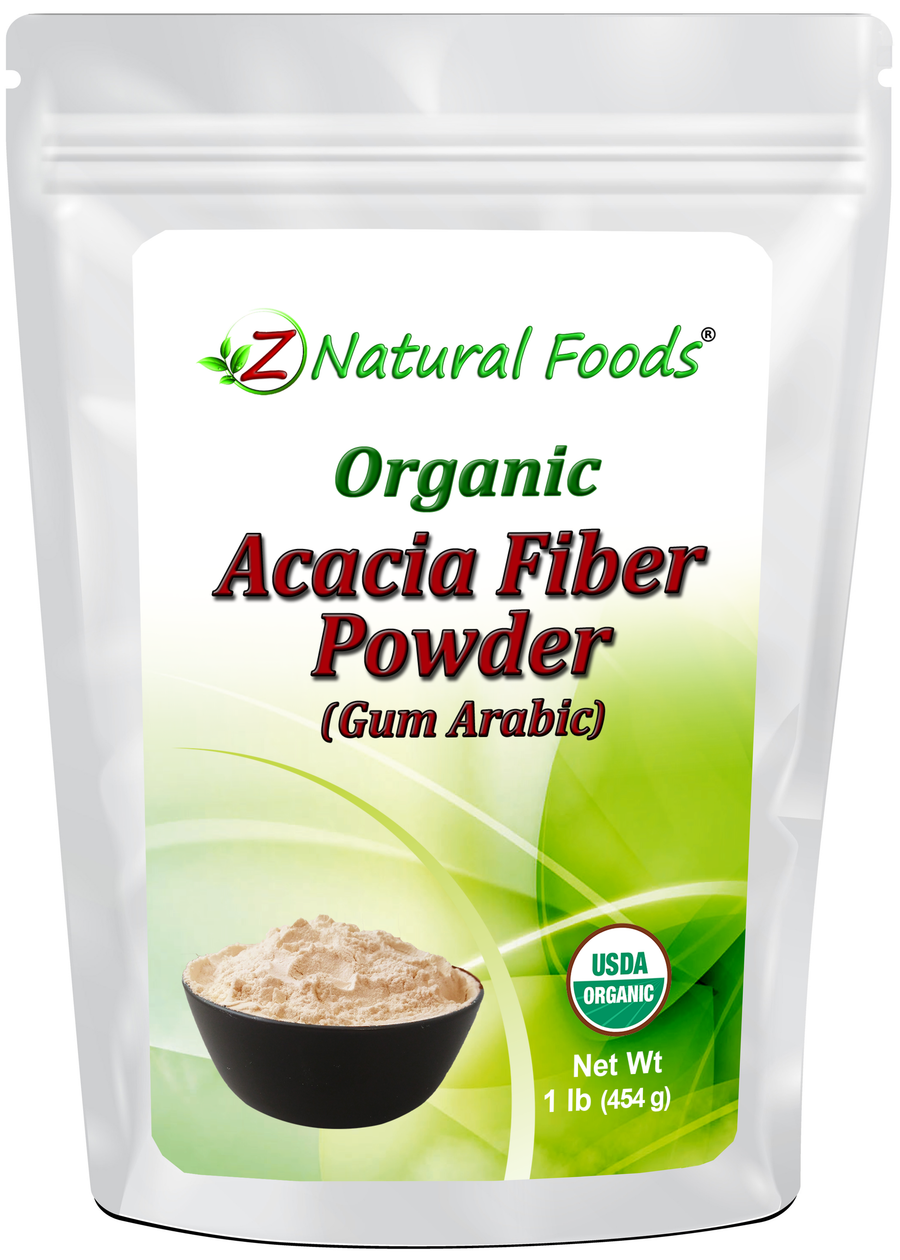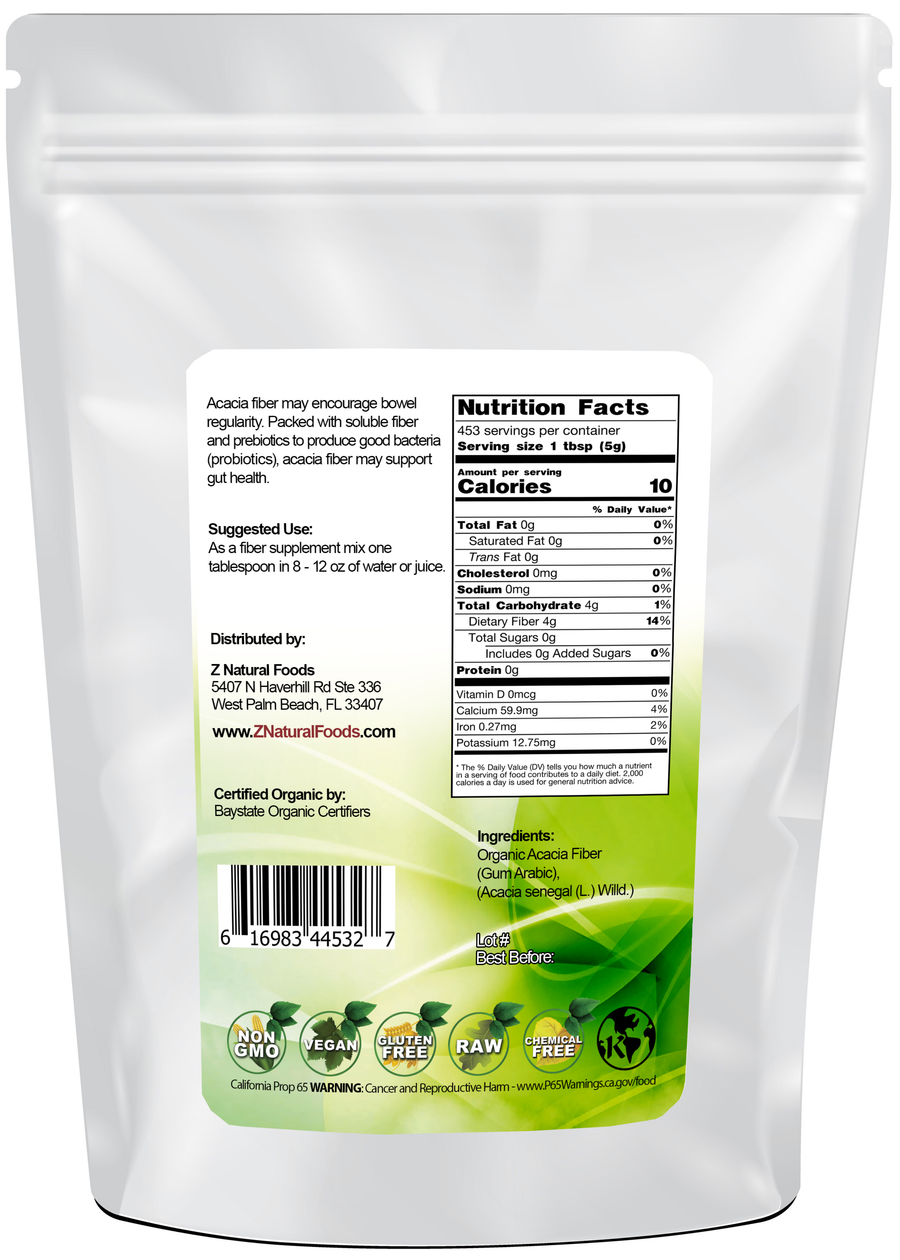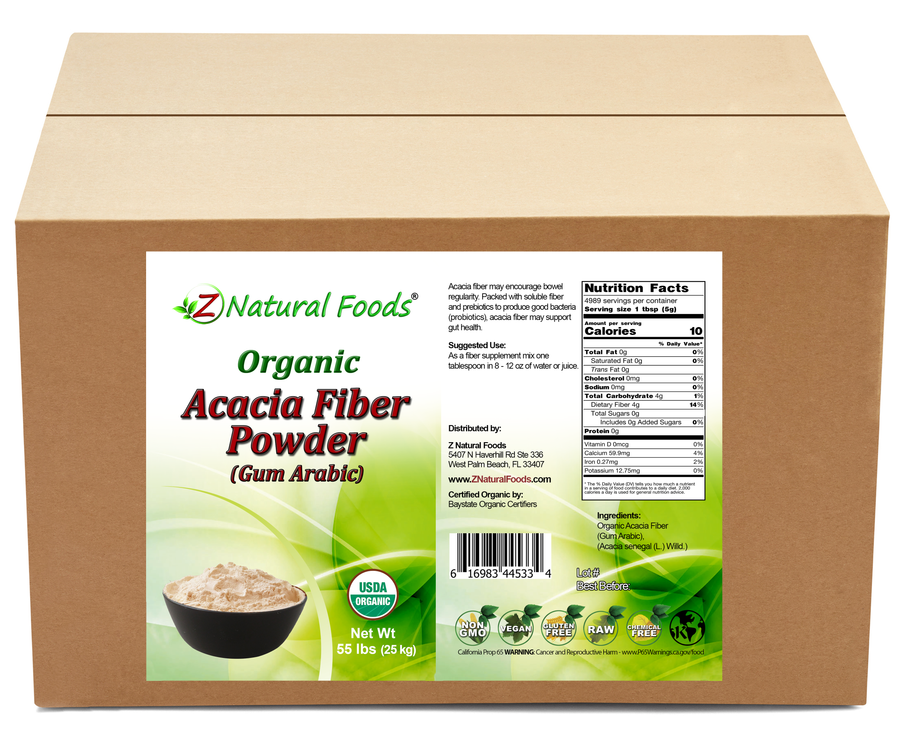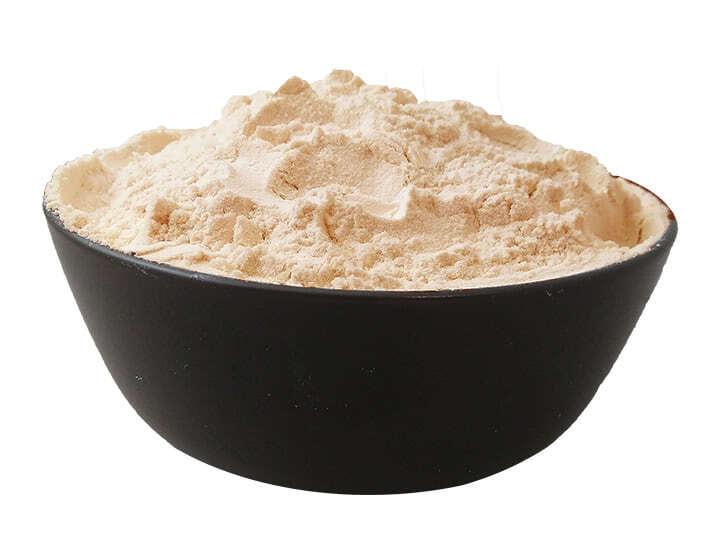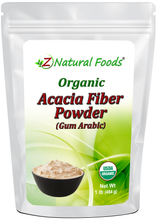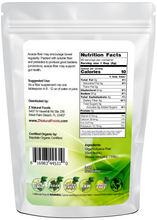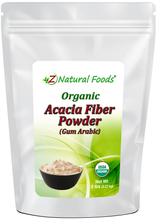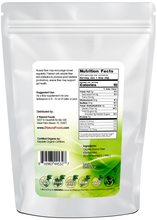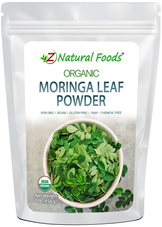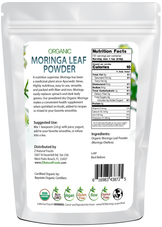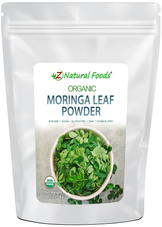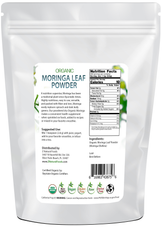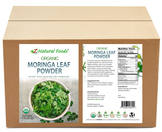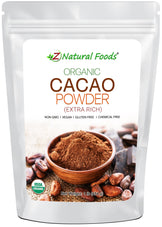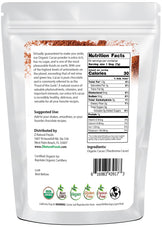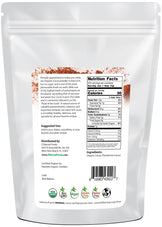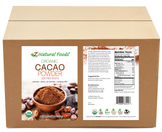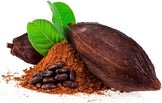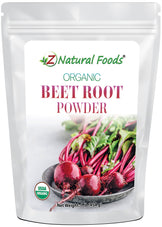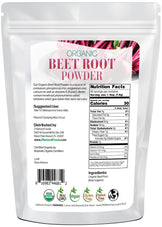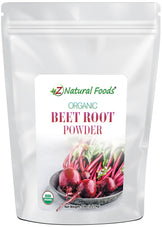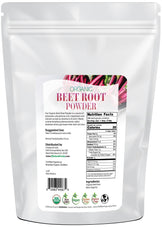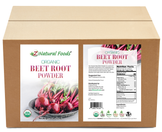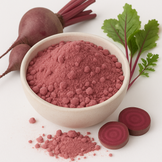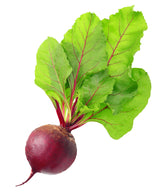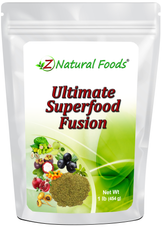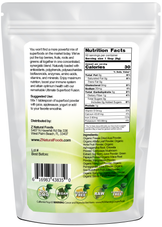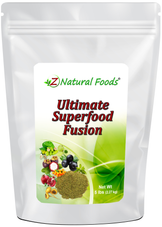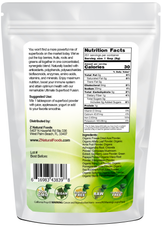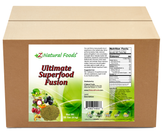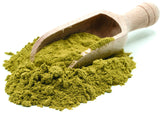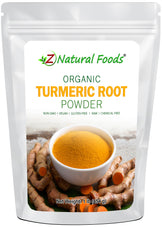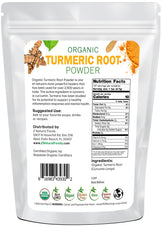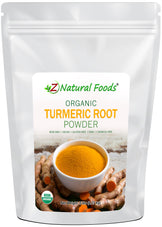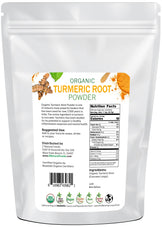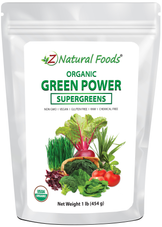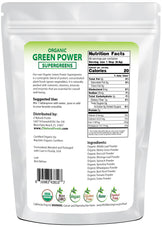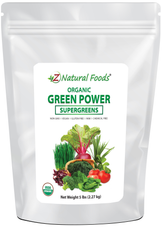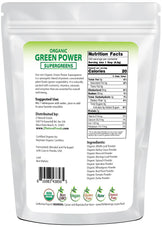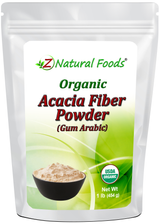About Product
Acacia Fiber (Gum Arabic) is a natural plant-derived polysaccharide primarily composed of D-galactose and sourced from regions including Africa, Asia, and Australia. Recognized as a versatile hydrocolloid, it is widely used as an emulsifier and stabilizer in food, beverage, and other applications. Beyond its functional uses in product formulation, Acacia Fiber is valued in both traditional and modern practices for its versatility and long-standing role in wellness and nutrition markets.
Some research suggests that Acacia Fiber may contain the following constituents:
Gum acacia contains neutral sugars (rhamnose, arabinose, and galactose), acids (glucuronic acid and 4-methoxyglucuronic acid), arabinose, galactose, rhamnose, glucuronic acid, and magnesium. Its complex structure is still not entirely known. Its backbone chain consists of D-galactose units, and its side chains are composed of D-glucuronic acid units with l-rhamnose or l-arabinose as end units.
Suggested Use: One tablespoon is 8-12 oz of water or juice as a fiber supplement.
Mixing Suggestions: This food can be taken as a stand-alone fiber supplement or added to food as a natural thickening agent.
Botanical Name: Acacia Senegal (L.) Wild.
Other Names: Senegal, Acacia, Cape Gum, Egyptian Thorn, Gum Acacia, Gum Arabic, Gum Senegal, Tamarisk, Babul.
Parts Used: The gum.
Certifications: Certified USDA Organic.
Ingredients: Organic Acacia Fiber (Gum Arabic).
Origin: Grown in France and processed in the USA, and packaged with care in Florida, USA.
* Product packaging, pictures, and origin may vary.
Sources & References
1. Diaz-Bolio, J. (1988). The Aztecs' Medicinal Diet of Acacia Gum. Journal of Ethnobiology, 8(2), 165-169.
2. Ewies, A., Ewies, A., Khan, S., Rutherford, T., & El-Toukhy, T. (2014). Ancient Egyptian prosthodontic methods: A review and application to a specific find. Journal of Archaeological Science, 41, 782-789.
3. Mazumder, R., Bhattacharya, S., Pattnaik, G., Mazumder, A., & Rath, P. (2005). Isolation and structural elucidation of arabinogalactan from Acacia nilotica gum. Natural Product Sciences, 11(3), 119-124.
4. Mounjouenpou, P., Piombo, G., & Baréa, B. (2018). Characterisation of arabinogalactan gum exudates from Anogeissus leiocarpus. Carbohydrate Polymers, 186, 169-178.
5. Sangeetha, P., Ramesh, M., & Prapulla, S. (2005). Recent trends in the microbial production, analysis, and application of Fructooligosaccharides. Trends in Food Science & Technology, 16(10), 442
6. Van Loo J., Coussement P., de Leenheer L., Hoebregs H., Smits G. On the presence of inulin and oligofructose as natural ingredients in the Western diet. Crit. Rev. Food Sci. Nutr. 1995;35:525–552. doi: 10.1080/10408399509527714.
7. Livesey G. The energy values of dietary fibre and sugar alcohols for man. Nutr. Res. Rev. 1992;5:61–84. doi: 10.1079/NRR19920007.
8. Lied G.A., Lillestol K., Lind R., Valeur J., Morken M.H., Vaali K., Gregersen K., Florvaag E., Tangen T., Berstad A. Perceived food hypersensitivity: A review of 10 years of interdisciplinary research at a reference center. Scan. J. Gastroenterol. 2011;40:1169–1178.
9. Grabitske H.A., Slavin J.L. Gastrointestinal effects of low-digestible carbohydrates. Crit. Rev. Food Sci. Nutr. 2009;49:327–360. doi: 10.1080/10408390802067126.
10. Pasman W., Wils D., Saniez M.H., Kardinaal A.F. Long-term gastrointestinal tolerance of NUTRIOSE FB in healthy men. Eur. J. Clin. Nutr. 2006;60:1024–1034. doi: 10.1038/sj.ejcn.1602418.
11. Gibson G.R., Scott K.P., Rastall R.A., Tuohy K.M., Hotchkiss A., Dubert-Ferrandon A., Gareau M., Murphy E.F., Saulnier D., Loh G., et al. Dietary prebiotics: Current status and new definition. Food Sci. Technol. Bull. Funct. Foods. 2010;7:1–19. doi: 10.1616/1476-2137.15880. [Cross Ref]
12. Cummings J.H., Macfarlane G.T. The control and consequences of bacterial fermentation in the human colon. J. Appl. Bacteriol. 1991;70:443–459. doi: 10.1111/j.1365-2672.1991.tb02739.x.
13. Gordon J.I., Ley R.E., Wilson R., Mardis E., Xu J., Fraser C.M., Relman D.A. Extending our view of self: The Human Gut Microbiome Initiative (HGMI) [(accessed on 8 October 2011)]. Available online: http://www.genome.gov/Pages/Research/Sequencing/SeqProposals/HGMISeq.pdf.
14. Lupton J.R. Microbial degradation products influence colon cancer risk: The butyrate controversy. J. Nutr. 2004;134:479–482.
15. DeFillippo F.C., Cavallieri D., Di P.M., Ramazzotti M., Pouliet J.B., Massart S., Collini S., Pieraccini G., Lionetti P. Impact of diet in shaping gut microbiota revealed by a comparative study in children from Europe and rural Africa. Proc. Natl. Acad. Sci. USA. 2010;107:14691–14696. doi: 10.1073/pnas.1005963107. [PMC free article]
16. Brownawell A.M., Caers W., Gibson G.R., Kendall C.W.C., Lewis K.D., Ringel Y., Slavin J.L. Prebiotics and the health benefits of fiber: Current regulatory status, future research, and goals. J. Nutr. 2012;142:1–13. doi: 10.3945/jn.111.148155.
17. Slavin J.L. Position of the American Dietetic Association: Health implications of dietary fiber. J. Am. Diet. Assoc. 2008;108:1716–1731. doi: 10.1016/j.jada.2008.08.007.
18. Howlett J.J., Betteridge V.A., Champ M., Craig S.A.S., Meheust A., Jones J.M. The definition of dietary fiber—Discussions at the Ninth Vahouny Fiber Symposium: Building scientific agreement. Food Nutr. Res. 2010;54 doi: 10.3402/fnrv5405750. [PMC free article]
19. Jones J.M. Dietary Fibre’s Co-Passengers: Is It the Fibre or the Co-Passengers? In: van der Kamp J.W., Jones J., Mccleary B., Topping D.J., editors. Dietary Fiber: New Frontiers for Food and Health. Wageningen Academic Publishers; Wageningen, The Netherlands: 2010. pp. 365–378.
20. Slavin J.L., Savarino V., Parades-Diaz A., Fotopoulos G. A review of the role of soluble fiber in health with specific reference to wheat dextrin. J. Int. Med. Res. 2009;37:1–17.
21. Spahn J.M., Lyon J.M., Altman J.M., Blum-Kemelor D.M., Essery E.V., Fungwe T.V., Macneil P.C., McGrane M.M., Obbagy J.E., Wong V.P. The systematic review methodology used to support the 2010 Dietary Guidelines Advisory Committee. J. Am. Diet. Assoc. 2011;111:520–523. doi: 10.1016/j.jada.2011.01.005.
22. Hopping B.N., Erber E., Grandinetti A., Park S.Y., Kolonel L.N., Maskarinec G. Dietary fiber, magnesium, and glycemic load alter risk of type 2 diabetes in a multiethnic cohort in Hawaii. J. Nutr. 2010;140:68–74. doi: 10.3945/jn.109.112441. [PMC free article]
23. Meyer K.A., Kushi L.H., Jackobs D.R., Slavin J., Sellers A.A., Folsom A.R. Carbohydrates, dietary fiber, and incident type 2 diabetes in older women. Am. J. Clin. Nutr. 2000;71:921–830.
24. Biorklund M., Rees A., van Mensink R.P., Onning G. Changes in serum lipids and postprandial glucose and insulin concentrations after consumption of beverages with beta-glucans from oats or barley: A randomized dose controlled trial. Eur. J. Clin. Nutr. 2005;59:1272–1281. doi: 10.1038/sj.ejcn.1602240.
25. Nazare J.A., Sauvinet V., Normand S., Guerin-Deremaux L., Gabert L., Desige M., Wils D., Laville M. Impact of a resistant dextrin with a prolonged oxidation pattern on day-long ghrelin profile. J. Am. Coll. Nutr. 2011;30:63–72.
26. Mathern J.R., Raatz S.K., Thomas W., Slavin J.L. Effect of fennugreek fiber on satiety, blood glucose and insulin response and energy intake in obese subjects. Phytother. Res. 2009;23:1543–1548. doi: 10.1002/ptr.2795.
27. Cummings J.H. The Effect of Dietary Fiber on Fecal Weight and Composition. In: Spiller G.A., editor. CRC Handbook of Dietary Fiber in Human Nutrition. CRC Press; Boca Raton, FL, USA: 1993. pp. 263–333.
28. Slavin J., Feirtag J. Chicory inulin does not increase stool weight or speed up intestinal transit time in healthy male subjects. Food Funct. 2011;2:72–77. doi: 10.1039/c0fo00101e.
29. Bonnema A.L., Kohlberg L.W., Thomas W., Slavin J.L. Gastrointestinal tolerance to chicory inulin products. J. Am. Diet. Assoc. 2010;110:865–868. doi: 10.1016/j.jada.2010.03.025.
30. Grabitske H.A., Slavin J.L. Low-digestible carbohydrates in practice. J. Am Diet Assoc. 2008;108:1677–1681. doi: 10.1016/j.jada.2008.07.010.
31. Slavin J., Green H. Dietary fibre and satiety. Nutr. Bull. 2007;32:32–42. doi: 10.1111/j.1467-3010.2007.00603.x. [Cross Ref]
32. Chaudhri O.B., Salem V. Gastrointestinal satiety signals. Annu. Rev. Physiol. 2008;70:239–255. doi: 10.1146/annurev.physiol.70.113006.100506.
33. Guerin-Deremaux L., Pochat M., Reifer C., Wils D., Cho S., Miller L.E. The soluble fiber Nutriose induces a dose dependent beneficial impact on satiety over time in humans. Nutr. Res. 2011;31:665–672. doi: 10.1016/j.nutres.2011.09.004.
34. Tucker L.A., Thomas K.S. Increasing total fiber intake reduces risk of weight and fat gains in women. J. Nutr. 2009;139:576–581. doi: 10.3945/jn.108.096685.
35. Howarth N.C., Saltzman E., Roberts S.B. Dietary fiber and weight regulation. Nutr. Rev. 2001;59:129–139. doi: 10.1111/j.1753-4887.2001.tb07001.x.
36. Ley R.E., Turnbaugh P.J., Klein S., Gordon J. Microbial ecology: Human gut microbes associated with obesity. Nature. 2006;444:1027–1031. doi: 10.1038/nature05414.
37. Musso G., Gambino R., Cassader M. Gut microbiota as a regulator of energy homeostasis and ectopic fat deposition: Mechanisms and implications for metabolic disorders. Curr. Opin. Lipidol. 2010;21:76–83. doi: 10.1097/MOL.0b013e3283347ebb.
38. Lanza E., Yu B., Murphy G., Albert P.S., Chan B., Marshall J.R., Lance P., Paskett E.D., Weissfeld J., Slattery M., et al. The polyp prevention trial continued follow-up study: No effect of a low-fat, high-fiber, high-fruit and vegetable diet on adenoma recurrence eight years after randomization. Cancer Epidemiol. Biomarkers Prev. 2007;16:1745–1752. doi: 10.1158/1055-9965.EPI-07-0127.
39. Costabile A., Kolida S., Klinder A., Gietl E., Bauerlein M., Frohburg C., Landschutze V., Gibson G.R. A double-blind, placebo-controlled, cross-over study to establish the bifidogenic effect of a very-long chain inulin extracted from globe artichoke (Cynara scolymus) in healthy subjects. Br. J. Nutr. 2010;104:1007–1017. doi: 10.1017/S0007114510001571.
40. Ramnani P., Gaudier E., Bingham M., van Bruggen P., Tuohy K.M., Gibson G.R. Prebiotic effect of fruit and vegetable shots containing Jerusalem artichoke inulin: A human intervention study. Br. J. Nutr. 2010;104:233–240. doi: 10.1017/S000711451000036X.
41. Calame W., Weseler A.R., Viebke C., Flynn C., Siemensma A.D. Gum arabic establishes prebiotic functionality in healthy human volunteers in a dose-dependent manner. Br. J. Nutr. 2008;100:1269–1275. doi: 10.1017/S0007114508981447.
42. Jie Z., Bang-Yao J., Ming-Jie X., Hai-wei L., Zu-kang Z., Ting-song W., Craig S.A.S. Studies on the effects of polydextrose intake on physiologic functions in Chinese people. Am. J. Clin. Nutr. 2000;72:1503–1509.
43. Hengst C., Ptok S., Roessler A., Fechner A., Jahreis G. Effects of polydextrose supplementation on different faecal parameters in healthy volunteers. Int. J. Food Sci. Nutr. 2009;60:96–105. doi: 10.1080/09637480802526760.
44. Lefranc-Millot C., Gruerin-Deremaux L., Wils D., Neut C., Miller L.E., Saniez-Degrave M.H. Impact of a resistant dextrin on intestinal ecology: How altering the digestive ecosystem with NUTRIOSE, a soluble fiber with prebiotic properties, may be beneficial for health. J. Int. Med. Res. 2012;40:211–224.
45. Eli M., Cattivelli D., Soldi S., Bonatti M., Morelli L. Evaluation of prebiotic potential of refined psyllium (Plantago ovata) fiber in healthy women. J. Clin. Gastroenterol. 2008;42:S174–S176. doi: 10.1097/MCG.0b013e31817f183a.
46. Costabile A., Klinder A., Fava F., Napolitano A., Fogliano V., Leonard C., Gibson G.R., Tuohy K.M. Whole-grain wheat breakfast cereal has a prebiotic effect on the human gut microbiota: A double-blind, placebo-controlled, crossover study. Br. J. Nutr. 2008;99:110–120.
47. Carvalho-Wells A.L., Helmolz K., Nodet C., Molzer C., Leonard C., McKevith B., Thielecke F., Jackson K.G., Tuohy K.M. Determination of the in vivo prebiotic potential of a maize-based whole grain breakfast cereal: A human feeding study. Br. J. Nutr. 2010;104:1353–1356. doi: 10.1017/S0007114510002084.
48. Mitsou E.K., Kougia E., Nomikos T., Yannakoulia M., Mountzouris K.C., Kyriaacou A. Effect of banana consumption on faecal microbiota: A randomized, controlled trial. Anaerobe. 2011;17:384–387. doi: 10.1016/j.anaerobe.2011.03.018.
49. Watson D., O’Connell Moterway M., Schoterman M.H.C., Joost van Neerven R.J., Nauta A., van Sinderen D. Selective carbohydrate utilization by lactobacilli and bifidobacteria. J. Appl. Microbiol. 2012 doi: 10.1111/jam.12105.
50. Saavedra J.M., Tschernia A. Human studies with probiotics and prebiotics: Clinical implications. Br. J. Nutr. 2002;87:S241–S246.
51. Parisi G.C., Zilli M., Miani M.P., Carrara M., Verdianelli G., Battaglia G., Desidera S., Faedo A., Malzolino C., Tonon A., et al. High-fiber diet supplementation in patients with irritable bowel syndrome (IBS): A multicenter, randomized, open trial comparison between wheat bran diet and partially hydrolyzed guar gum (PHGG) Dig. Dis. Sci. 2002;47:1697–1704.
52. Chuang S.C., Norat T., Murphy N., Olsen A., Tjonneland A., Overvad K., Boulton-Ruell M.C., Perquier F., Dartois L., Kaaks R., et al. Fiber intake and total and cause-specific mortality in the European prospective investigation into Cancer and Nutrition cohort. Am. J. Clin. Nutr. 2012;96:164–174. doi: 10.3945/ajcn.111.028415.
53. Cummings J.H., Christie S., Cole T.J. A study of fructo oligosaccharides in the prevention of travellers’ diarrhoea. Aliment. Pharmacol. Ther. 2001;15:1139–1145. doi: 10.1046/j.1365-2036.2001.01043.x.
54. Drakoularakou A., Tzortzis G., Rastall R.A., Gibson G.R. A double-blind, placebo-controlled, randomized human study assessing the capacity of a novel galacto-oligosaccharide mixture in reducing travellers’ diarrhoea. Eur. J. Clin. Nutr. 2010;64:146–152. doi: 10.1038/ejcn.2009.120.
55. Konikoff M.R., Denson L.A. Role of fecal calprotectin as a biomarker of intestinal inflammation in inflammatory bowel disease. Inflamm. Bowel. Dis. 2006;12:524–534. doi: 10.1097/00054725-200606000-00013.
56. Silk D.B., Davis A., Vulevic J., Tzortzis G., Gibson G.R. Clinical trial: The effects of a trans-galactooligosaccharide prebiotic on faecal microbiota and symptoms in irritable bowel syndrome. Aliment. Pharmacol. Ther. 2009;29:508–518. doi: 10.1111/j.1365-2036.2008.03911.x.
57. Boutron-Ruault M.C., Marteau P., Lavergne-Slove A., Myara A., Gerhardt M.F., Franchisseur C., Bornet F. Effects of a 3-mo consumption of short-chain fructo-oligosaccharides on parameters of colorectal carcinogenesis in patients with or without small or large colorectal adenomas. Nutr. Cancer. 2005;53:160–168. doi: 10.1207/s15327914nc5302_5.
58. Limburg P.J., Mahoney M.R., Ziegler K.L., Sontag S.J., Schoen R.E., Benya R., Lawson M.J., Weinberg D.S., Stoffel E., Chiorean M., et al. Randomized phase II trial of sulindac, atorvastatin, and prebiotic dietary fiber for colorectal cancer chemoprevention. Cancer Prev. Res. (Phila.) 2001;4:259–269. [PMC free article]
59. Abrams S.A., Griffin I.J., Hawthorne K.M., Liang L., Gunn S.K., Darlington G., Ellis K.J. A combination of prebiotic short- and long-chain inulin-type fructans enhances calcium absorption and bone mineralization in young adolescents. Am. J. Clin. Nutr. 2005;82:471–476.
60. Martin B.R., Braan M.D., Wigertz K., Bryant R., Zhao Y., Lee W., Kempa-Steczko S., Weaver C.M. Fructo-oligosaccharides and calcium absorption and retention in adolescent girls. J. Am. Coll. Nutr. 2010;29:382–386.
61. Institute of Medicine. Dietary Reference Intakes for Energy, Carbohydrate, Fiber, Fat, Fatty Acids, Cholesterol, Protein, and Amino Acids. National Academies Press; Washington, DC, USA: 2002.
62. Forcheron F., Beylot M. Long-term administration of inulin-type fructans has no significant lipid-lowering effect in normolipidemic humans. Metabolism. 2007;56:1093–1098. doi: 10.1016/j.metabol.2007.03.019.
63. Ley R.E., Backhed F., Turnbaugh P., Lozupone C.A., Knight R.D., Gordon J.I. Obesity alters gut microbial ecology. Proc. Natl. Acad. Sci. USA. 2005;102:11070–11075. [PMC free article]
64. Turnbaugh P.J., Hamady M., Yatsunenko T., Cantarel B.L., Duncan A., Ley R.E., Sogin M.L., Jones W.J., Roe B.A., Affourtit J.P., et al. A core gut microbiome in obese and lean twins. Nature. 2009;457:480–484. [PMC free article]
65. Parnell J.A., Reimer R.A. Weight loss during oligofructose supplementation is associated with decreased ghrelin and increased peptide YY in overweight and obese adults. Am. J. Clin. Nutr. 2009;89:1751–1759. [PMC free article]
66. Cani P.D., Lecourt E., Dewulf E.M., Sohet F.M., Pachikian B.D., Naslain D., De B.F., Neyrinck A.M., Delzenne N.M. Gut microbiota fermentation of prebiotics increases satietogenic and incretin gut peptide production with consequences for appetite sensation and glucose response after a meal. Am. J. Clin. Nutr. 2009;90:1236–1243. doi: 10.3945/ajcn.2009.28095.
67. Hess J.R., Birkett A.M., Thomas W., Slavin J.L. Effects of short-chain fructooligosaccharides on satiety responses in healthy men and women. Appetite. 2011;56:128–134. doi: 10.1016/j.appet.2010.12.005.
68. Guerin-Deremaux L., Li S., Pochat M., Wils D., Mubasher M., Reifer C., Miller L.E. Effets of Nutriose dietary fiber supplementation on body weight, body composition, energy intake, and hunger in overweight men. Int. J. Food Sci. Nutr. 2011;62:628–635. doi: 10.3109/09637486.2011.569492.
69. US Department of Agriculture. Carbohydrates (Dietary Guidelines for Americans) 2010. [(accessed on 6 October 2011)]. Available online: http://www.cnpp.usda.gov/Publications/DietaryGuidelines/2010/DGAC/Report/D-5-Carbohydrates.pdf.
70. EFSA Panel on Dietetic Products Nutrition and Allergies. Guidance on the scientific requirements for health claims related to gut and immune function. EFSA J. 2011;9:1984.
71. Pineiro M., Asp N.G., Reid G., Macfarlane S., Morelli L., Brunser O., Tuhy K. FAO Technical meeting on prebiotics. J. Clin. Gastroenterol. 2008;42:S156–S159. doi: 10.1097/MCG.0b013e31817f184e.
72. Thompson WG, Longstreth GF, Drossman DA, Heaton KW, Irvine EJ, Müller-Lissner SA. Functional bowel disorders and functional abdominal pain. Gut. 1999;45 Suppl 2:II43–II47. [PMC free article]
73. Mönnikes H. Quality of life in patients with irritable bowel syndrome. J Clin Gastroenterol. 2011;45 Suppl:S98–101.
74. Drossman DA, Camilleri M, Mayer EA, Whitehead WE. AGA technical review on irritable bowel syndrome. Gastroenterology. 2002;123:2108–2131.
75. Gasbarrini A, Lauritano EC, Garcovich M, Sparano L, Gasbarrini G. New insights into the pathophysiology of IBS: intestinal microflora, gas production and gut motility. Eur Rev Med Pharmacol Sci. 2008;12 Suppl 1:111–117.
76. Barbara G, De Giorgio R, Stanghellini V, Cremon C, Salvioli B, Corinaldesi R. New pathophysiological mechanisms in irritable bowel syndrome. Aliment Pharmacol Ther. 2004;20 Suppl 2:1–9.
77. Dahlqvist G, Piessevaux H. Irritable bowel syndrome: the role of the intestinal microbiota, pathogenesis and therapeutic targets. Acta Gastroenterol Belg. 2011;74:375–380.
78. Wouters MM. New insight in the pathogenesis of functional gastrointestinal disorders: association between genetics and colonic transit. Neurogastroenterol Motil. 2011;23:893–897.
79. Chang JY, Talley NJ. Current and emerging therapies in irritable bowel syndrome: from pathophysiology to treatment. Trends Pharmacol Sci. 2010;31:326–334.
80. Meier R. Probiotics in irritable bowel syndrome. Ann Nutr Metab. 2010;57 Suppl:12–13.
81. Quigley EM. Gut microbiota and the role of probiotics in therapy. Curr Opin Pharmacol. 2011;11:593–603.
82. Girardin M, Seidman EG. Indications for the use of probiotics in gastrointestinal diseases. Dig Dis. 2011;29:574–587.
83. Aragon G, Graham DB, Borum M, Doman DB. Probiotic therapy for irritable bowel syndrome. Gastroenterol Hepatol (N Y) 2010;6:39–44. [PMC free article]
84. Sinn DH, Song JH, Kim HJ, Lee JH, Son HJ, Chang DK, Kim YH, Kim JJ, Rhee JC, Rhee PL. Therapeutic effect of Lactobacillus acidophilus-SDC 2012, 2013 in patients with irritable bowel syndrome. Dig Dis Sci. 2008;53:2714–2718.
85. Quigley EM. The use of probiotics in functional bowel disease. Gastroenterol Clin North Am. 2005;34:533–545, x.
86. Berrada N, Lemeland JF, Laroche G, Thouvenot P, Piaia M. Bifidobacterium from fermented milks: survival during gastric transit. J Dairy Sci. 1991;74:409–413.
87. Pochart P, Marteau P, Bouhnik Y, Goderel I, Bourlioux P, Rambaud JC. Survival of bifidobacteria ingested via fermented milk during their passage through the human small intestine: an in vivo study using intestinal perfusion. Am J Clin Nutr. 1992;55:78–80.
88. Marteau P, Cuillerier E, Meance S, Gerhardt MF, Myara A, Bouvier M, Bouley C, Tondu F, Bommelaer G, Grimaud JC. Bifidobacterium animalis strain DN-173 010 shortens the colonic transit time in healthy women: a double-blind, randomized, controlled study. Aliment Pharmacol Ther. 2002;16:587–593.
89. Guyonnet D, Chassany O, Ducrotte P, Picard C, Mouret M, Mercier CH, Matuchansky C. Effect of a fermented milk containing Bifidobacterium animalis DN-173 010 on the health-related quality of life and symptoms in irritable bowel syndrome in adults in primary care: a multicentre, randomized, double-blind, controlled trial. Aliment Pharmacol Ther. 2007;26:475–486.
90. Phillips GO. Acacia gum (Gum Arabic): a nutritional fibre; metabolism and calorific value. Food Addit Contam. 1998;15:251–264.
91. Goetze O, Fruehauf H, Pohl D, Giarrè M, Rochat F, Ornstein K, Menne D, Fried M, Thumshirn M. Effect of a prebiotic mixture on intestinal comfort and general wellbeing in health. Br J Nutr. 2008;100:1077–1085.
92. Camilleri M. Management of the irritable bowel syndrome. Gastroenterology. 2001;120:652–668.
93. Zuckerman MJ. The role of fiber in the treatment of irritable bowel syndrome: therapeutic recommendations. J Clin Gastroenterol. 2006;40:104–108.
94. Choi SC, Kim BJ, Rhee PL, Chang DK, Son HJ, Kim JJ, Rhee JC, Kim SI, Han YS, Sim KH, et al. Probiotic Fermented Milk Containing Dietary Fiber Has Additive Effects in IBS with Constipation Compared to Plain Probiotic Fermented Milk. Gut Liver. 2011;5:22–28. [PMC free article]
95. Drossman DA. The functional gastrointestinal disorders and the Rome III process. Gastroenterology. 2006;130:1377–1390.
96. Longstreth GF, Thompson WG, Chey WD, Houghton LA, Mearin F, Spiller RC. Functional bowel disorders. Gastroenterology. 2006;130:1480–1491.
97. Lewis SJ, Heaton KW. Stool form scale as a useful guide to intestinal transit time. Scand J Gastroenterol. 1997;32:920–924.
98. Kim HJ, Camilleri M, McKinzie S, Lempke MB, Burton DD, Thomforde GM, Zinsmeister AR. A randomized controlled trial of a probiotic, VSL#3, on gut transit and symptoms in diarrhoea-predominant irritable bowel syndrome. Aliment Pharmacol Ther. 2003;17:895–904.
99. Agrawal A, Houghton LA, Morris J, Reilly B, Guyonnet D, Goupil Feuillerat N, Schlumberger A, Jakob S, Whorwell PJ. Clinical trial: the effects of a fermented milk product containing Bifidobacterium lactis DN-173 010 on abdominal distension and gastrointestinal transit in irritable bowel syndrome with constipation. Aliment Pharmacol Ther. 2009;29:104–114.
100. O'Mahony L, McCarthy J, Kelly P, Hurley G, Luo F, Chen K, O’Sullivan GC, Kiely B, Collins JK, Shanahan F, et al. Lactobacillus and bifidobacterium in irritable bowel syndrome: symptom responses and relationship to cytokine profiles. Gastroenterology. 2005;128:541–551.
101. Moayyedi P, Ford AC. Symptom-based diagnostic criteria for irritable bowel syndrome: the more things change, the more they stay the same. Gastroenterol Clin North Am. 2011;40:87–103.
102. Kohimeler, L. et al: Ern;jhrungsabh;jngige Krankheiten und ihre Kosten. Schriftenreihhe des BMFG, Bd. 27, Nomos Veriag-Ges. 1993.
103. McLean-Ross, H.A.; Eastwood, MA.; Brydon. WG.: A study of the effects of dietary gum arabic in humans, Am. J. din. Nutr. (1983), 37, 368.
104. Jacobs, L.R.; Lupton, J.R.: Relationship between colonic luminar pH, cell proliferation and colonic carcinogenesis inl,2- Dimethjyihydrazine treated rats fed high fiber diets, cancer Res.(1986), 46, 1727.
105. Campbell, J.M.; Fahey, Jr. G.C.; Lichtensteiger, cA.; Demichele, S.J.; Garlex, K.A.: An Enteral Formula Containing Fish Oil, Indigestible Oligosaccharides, Gum Arabic and Antioxidants Affects Plasma and Colonic Phospholipid Fatty Acid and Prostaglandin Profiles in Pigs, J. Nutr. (1997), 127, 137.
106. Demign6, C.; R6m6S)~ C.: Schort chain fatty acids and hepatic metabolism, In: Short Chain Fatty Acids (Eds. Binder, H.J.; Cummings, J.H., Soergel), Kuwer Academic Publishers, Dordrecht (NL), 1994, 272.
107. Hill, Ml: Bacteria, dietary fibre and chronic intestinal disease, In: Dietary fibres (Edt.: Birch, G.G.; Parker, K.J.), Applied Sciences, London, 1983, 255.
108. Bliss, D.Z.; Stein, T.P; Schleifer, CR.; Settle, R.G.: Supplementation with gum arabic fibre increases fecal nitrogen excretion and lowers serum urea nitrogen concentration in chronic renal failure patients consuming a low-protein diet, Am. J. Clin. Nutr. (1996), 63, 392.
109. Tulung, B.; R6m6sy, C.; Demign6, C.: Specific Effects of Guar Gum or Gum Arabic on Adaptation of Cecal Digestion to High Fiber diets in the Rat, J. Nutr. (1987), 177, 1556.
110. Wapnir, RA.; Teichberg, S.; Go, J.T; Wingertzahn, M.A.; Harper, R.G.: Oral rehydration solutions: enhanced sodium absorption with gum arabic, J. Am. Coil. Nutr. (1996), 15, 377.
111. Assimon, S.; Stein, T.P,: Digestible Fiber Gum arabic, Nitrogen Exretion and Urea Recycling in Rats, Nutr., (1994), 10, 544.
112. Phillips, G.O.: Acacia gum (Gum arabic): A nutritional fibre; metabolism and calorific value, Food Add. Cont. (1998), 15, 251.
113. https://nutritionj.biomedcentral.com/articles/10.1186/1475-2891-11-111
114. https://www.ncbi.nlm.nih.gov/pubmed/17451113
115. Anderson DMW, Stoddart JF: Studies on uronic acid materials: Part XV. The use of molecular-sieve chromatography in studies on acacia senegal gum (Gum Arabic). Carbohydrate Res. 1966, 2 (2): 104-114. 10.1016/S0008-6215(00)81474-3.
116. Dziezak JD: A focus on gums. Food Technol. 1991, 45: 116-132.
117. FAO (Rome): Gum Arabic. Food and Nutrition. 1990, Paper 49., 23
118. FAO/WHO: 1969 evaluations of some pesticide residues in food. FAO/PL: 1969/M/17/1; WHO/Food Add./70.38. 1970, 145-177. on INCHEM. http://www.inchem.org/pages/jmpr.html.
119. Phillips AO, Phillips GO: Biofunctional behaviour and health benefits of a specific Gum Arabic. Food Hydrocolloids. 2011, 25 (2): 165-169. 10.1016/j.foodhyd.2010.03.012.
120. Phillips GO, Ogasawara T, Ushida K: The regulatory and scientific approach to defining Gum Arabic (acacia senegal and acacia seyal) as a dietary fibre. Food Hydrocolloids. 2008, 22: 24-35. 10.1016/j.foodhyd.2006.12.016.
121. Calame W, Weseler AR, Viebke C, Flynn C, Siemensma AD: Gum Arabic establishes prebiotic functionality in healthy human volunteers in a dose-dependent manner. Br J Nutr. 2008, 100 (6): 1269-1275. 10.1017/S0007114508981447.
122. Sharma RD: Hypocholesterolemic effect of gum acacia in men. Nutr Res. 1985, 5 (12): 1321-1326. 10.1016/S0271-5317(85)80042-7.
123. Nasir O, Wang K, Föller M, et al: Downregulation of angiogenin transcript levels and inhibition of colonic carcinoma by Gum Arabic (Acacia senegal). Nutr Cancer. 2010, 62 (6): 802-810. 10.1080/01635581003605920.
124. Al-Majed AA, Mostafa AM, Al-Rikabi AC, Al-Shabanah OA: Protective effects of oral arabic gum administration on gentamicin-induced nephrotoxicity in rats. Pharmacol Res. 2002, 46 (5): 445-451. 10.1016/S1043661802001251.
125. Ali BH, Al-Qarawi AA, Haroun EM, Mousa HM: The effect of treatment with Gum Arabic on gentamicin nephrotoxicity in rats: a preliminary study. Ren Fail. 2003, 25 (1): 15-20. 10.1081/JDI-120017439.
126. Ali BH, Al-Salam S, Al-Husseni I, et al: Effects of Gum Arabic in rats with adenine-induced chronic renal failure. Exp Biol Med (Maywood). 2010, 235 (3): 373-382. 10.1258/ebm.2009.009214.
127. Ali BH, Ziada A, Blunden G: Biological effects of Gum Arabic: a review of some recent research. Food Chem Toxicol. 2009, 47 (1): 1-8. 10.1016/j.fct.2008.07.001.
128. Glover DA, Ushida K, Phillips AO, Riley SG: Acacia(sen) SUPERGUM™ (Gum Arabic): an evaluation of potential health benefits in human subjects. Food Hydrocolloids. 2009, 23 (8): 2410-2415. 10.1016/j.foodhyd.2009.06.020.
129. Slavin J: Why whole grains are protective: biological mechanisms. Proc Nutr Soc. 2003, 62 (1): 129-134. 10.1079/PNS2002221.
130. Chandalia M, Garg A, Lutjohann D, von Bergmann K, Grundy SM, Brinkley LJ: Beneficial effects of high dietary fiber intake in patients with type 2 diabetes mellitus. N Engl J Med. 2000, 342 (19): 1392-1398. 10.1056/NEJM200005113421903.
131. Murakami K, Sasaki S, Takahashi Y, Uenishi K, Yamasaki M, Hayabuchi H, Goda T, Oka J, Baba K, Ohki K, Watanabe R, Sugiyama Y: Nutrient and food intake in relation to serum leptin concentration among young Japanese women. Nutrition. 2007, 23 (6): 461-468. 10.1016/j.nut.2007.04.006.
132. Kuroda M, Ohta M, Okufuji T, Takigami C, Eguchi M, Hayabuchi H, Ikeda M: Frequency of soup intake and amount of dietary fiber intake are inversely associated with plasma leptin concentrations in Japanese adults. Appetite. 2010, 54 (3): 538-543. 10.1016/j.appet.2010.02.010. Epub 2010 Feb 20.
133. Nasir O, Artunc F, Wang K: Downregulation of mouse intestinal Na(+)-coupled glucose transporter SGLT1 by Gum Arabic (Acacia Senegal). Cell Physiol Biochem. 2010, 25 (2–3): 203-210.
134. Hedley AA, Ogden CL, Johnson CL, Carroll MD, Curtin LR, Flegal KM: Prevalence of overweight and obesity among US children, adolescents, and adults, 1999–2002. JAMA. 2004, 291 (23): 2847-2850. 10.1001/jama.291.23.2847.
135. Lear SA, Toma M, Birmingham L, et al: Modification of the relationship between simple anthropometric indices and risk factors by ethnic background. Metabolism. 2003, 52 (10): 1295-1301. 10.1016/S0026-0495(03)00196-3.
136. Manson JE, Colditz GA, Stampfer MJ, Willett WC, Rosner B, Monson RR, Speizer FE, Hennekens CH: A prospective study of obesity and risk of coronary heart disease in women. N Engl J Med. 1990, 322 (13): 882-889. 10.1056/NEJM199003293221303.
137. Whitley E, Ball J: Statistics review 5: comparison of means. Crit Care. 2002, 6: 424-428. 10.1186/cc1548.
138. Jackson AS, Pollock ML: Generalized equations for predicting body density of men. Br J Nutr. 1978, 40 (3): 497-504. 10.1079/BJN19780152.
139. Siri WE: Body composition from fluid spaces and density: analysis of methods. 1961. Nutrition. 1993, 9 (5): 480-491.
140. Howarth NC, Saltzman E, Roberts SB: Dietary fiber and weight regulation. Nutr Review. 2001, 59 (5): 129-139.
141. Anderson DM: Evidence for the safety of gum arabic (Acacia senegal (L.) Willd.) as a food additive–a brief review. Food Addit Contam. 1986, 3 (3): 225-230. 10.1080/02652038609373584.
142. Cash TF, Winstead BA, Janda LH: The great American shape-up: body image survey report. Psychology Today. 1986, 20 (4): 30-37.
143. Castano B, Molina J, Cabrillana JM, Montoya-Alonso JA, Serra-Majem L: Variables predictive of adherence to diet and physical activity recommendations in the treatment of obesity and overweight, in a group of Spanish subjects. Int J Obes. 2004, 28: 697-705. 10.1038/sj.ijo.0802602.
144. Pereira MA, Ludwig DS: Dietary fiber and body-weight regulation. Observations and mechanisms. Pediatr Clin North Am. 2001, 48: 969-980. 10.1016/S0031-3955(05)70351-5.
145. Calame W, Thomassen F, Hull S, Viebke C, Siemensma AD: Evaluation of satiety enhancement, including compensation, by blends of gum arabic. A methodological approach. Appetite. 2011, 57 (2): 358-364. 10.1016/j.appet.2011.06.005.
146. Ganji V, Kafai MR, McCarthy E: Serum leptin concentrations are not related to dietary patterns but are related to sex, age, body mass index, serum triacylglycerol, serum insulin, and plasma glucose in the US population. Nutr Metab (Lond). 2009, 6: 3-10.1186/1743-7075-6-3.
147. Wayne SJ, Neuhouser ML, Ulrich CM, Koprowski C, Baumgartner KB, Baumgartner RN, McTiernan A, Bernstein L, Ballard-Barbash R: Dietary fiber is associated with serum sex hormones and insulin-related peptides in postmenopausal breast cancer survivors. Breast Cancer Res Treat. 2008, 112 (1): 149-158. 10.1007/s10549-007-9834-y. Epub 2007 Dec 5.
148. Moundras C, Behr SR, Demigné C, Mazur A, Rémésy C: Fermentable polysaccharides that enhance fecal bile acid excretion lower plasma cholesterol and apolipoprotein E-rich HDL in rats. J Nutr. 1994, 124: 2179-2188.
149. Islam A, Civitarese AE, Hesslink RL, Gallaher DD: Viscous dietary fiber reduces adiposity and plasma leptin and increases muscle expression of fat oxidation genes in rats. Obesity (Silver Spring). 2012, 20 (2): 349-355. 10.1038/oby.2011.341.
150. Cherbut C, Michel C, Raison V, Kravtchenko T, Méance S: Acacia Gum is a bifidogenic dietary fiber with high digestive tolerance in healthy humans. Microb Ecol Heal Dis. 2003, 15: 43-50. 10.1080/08910600310014377.
151. Wapnir RA, Wingertzahn MA, Moyse J, Teichberg S: Gum arabic promotes rat jejunal sodium and water absorption from oral rehydration solutions in two models of diarrhea. Gastroenterology. 1997, 112: 1979-1985. 10.1053/gast.1997.v112.pm9178690.
152. Goodrum LJ, Patel A, Leykam JF, Kieliszewski MJ: Gum arabic glycoprotein contains glycomodules of both extensin and arabinogalactan-glycoproteins. Phytochemistry. 2000, 54 (1): 99-106. 10.1016/S0031-9422(00)00043-1.
153. Slavin J.L. Dietary fiber: Classification, chemical analyses, and food sources. J. Am. Diet. Assoc. 1987;87:1164–1171.
154. Gibson G.R., Roberfroid M.B. Dietary modulation of the human colonic microbiota: Introducing the concept of prebiotics. J. Nutr. 1995;125:1401–1412.
155. Gibson G.R., Probert H.M., van Loo J., Rastall R.A., Roberfroid M.B. Dietary modulation of the human colonic microbiota: Updating the concept of prebiotics. Nutr. Res. Rev. 2004;17:259–275. doi: 10.1079/NRR200479.
156. Roberfroid M., Gobson G.R., Hoyles L., McCartney A.L., Rastall R., Rowland I., Wolvers D., Watzl B., Szajewska H., Stahl B., et al. Prebiotic effects: Metabolic and health benefits. Br. J. Nutr. 2011;104:S1–S63.
157. Leach J.D., Sobolik K.D. High dietaryintake of prebiotic inulin-type fructans in the prehistoric Chihauhuan desert. Br. J. Nutr. 2010;103:1158–1561.
* Reviews & Success Stories Disclaimer
Product reviews solely reflect the views and opinions expressed by the contributors and not those of Z Natural Foods. Z Natural Foods does not verify or endorse any claims made in these reviews. Statements have not been evaluated by the FDA and are not intended to diagnose, treat, cure, or prevent any disease or health condition.REFERRAL PROGRAM
Share your personal link to your friends and welcome them with rewards. Claim yours when they make their first purchase.

GIVE
$10 off discount

GET
$10 off discount
